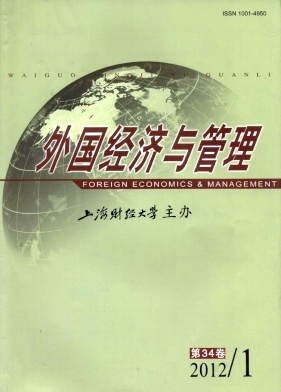消费者信任修复研究评介及展望
外国经济与管理 2012 年 第 34 卷第 01 期, 页码:57 - 64
摘要
参考文献
摘要
信任修复是在信任衰退的情形下,信任违背方采取一定的修复方式,恢复和提升受害方对其可信赖性的感知水平,修复受害方的信任意愿,实现信任重建或信任水平上升的过程。金融危机以来层出不穷的企业信任危机事件极大地损害了消费者对企业的信任,在信任违背之后修复消费者的信任对企业来讲迫在眉睫。本文从信任修复的必要性、信任修复的影响因素、信任修复的策略以及信任修复的过程机制等方面批判性地梳理了国内外相关研究成果,并在此基础上指出了未来研究方向。
[1]Ali H and Birley S.The role of trust in the marketing activi-ties of entrepreneurs establishing new ventures[J].Journal ofMarketing Management,1998,14(7):749-763.
[2]Aune R K,et al.Managing the outcomes of discovered decep-tion[J].Journal of Social Psychology,1998,138(6):677-689.
[3]Dirks K T,et al.Repairing relationships within and betweenorganizations:Building a conceptual foundation[J].Academyof Management Review,2009,34(1):68-84.
[4]East R.Complaining as planned behavior[J].Psychology andMarketing,2000,17(12):1077-1095.
[5]Gillespie N and Dietz G.Trust repair after an organization-level failure[J].Academy of Management Review,2009,34(1):127-145.
[6]Kim P H,et al.The repair of trust:A dynamic bilateral per-spective and multilevel conceptualization[J].Academy ofManagement Review,2009,34(3):401-422.
[7]Kim P H,et al.Removing the shadow of suspicion:Theeffects of apology versus denial for repairing competence-ver-sus integrity-based trust violations[J].Journal of AppliedPsychology,2004,89(1):104-118.
[8]Lewicki R J and Bunker B B.Developing and maintainingtrust in work relationships[A].Kramer R M and Tylers T R(Eds.).Trust in organizations:Frontiers of theory and re-search[C].CA:Sage,1996:114-139.
[9]Mayer R C,et al.An integrative model of organizational trust[J].Academy of Management Review,1995,20(3):709-734.
[10]McCullough M,et al.Interpersonal forgiving in close rela-tionships[J].Journal of Personality and Social Psychology,1997,73(2):321-336.
[11]McKnight D,et al.Initial trust formation in new organiza-tional relationships[J].Academy of Management Review,1998,23(3):473-490.
[12]Morrison E W and Robinson S L.When employees feel be-trayed:A model of how psychological contract violation de-velops[J].Academy of Management Review,1997,22(1):226-256.
[13]Schmitt M,et al.Effects of objective and subjective accountcomponents on forgiving[J].Journal of Social Psychology,2004,144(5):465-485.
[14]Schoorman F D,et al.An integrative model of organizationaltrust:Past,present,and future[J].Academy of ManagementReview,2007,32(2):344-354.
[15]Schweitzer M E,et al.Promises and lies:Restoring violatedtrust[J].Organizational Behavior&Human DecisionProcesses,2006,101(1):1-19.
[16]Smith A,et al.A model of customer satisfaction with serviceencounters involving failure and recovery[J].Journal of Mar-keting Research,1999,36(3):356-372.
[17]Tomlinson E C,et al.The road to reconciliation:Anteced-ents of victim willingness to reconcile following a brokenpromise[J].Journal of Management,2004,30(2):165-187.
[18]Tomlinson E C and Mayer R C.The role of causal attribu-tion dimensions in trust repair[J].Academy of ManagementReview,2009,34(1):85-104.
[19]Wang S J and Huff L C.Explaining buyers responses to sell-ers violation of trust[J].European Journal of Marketing,2007,41(9-10):1033-1052.
[20]Xie Y and Peng S.How to repair customer trust after nega-tive publicity:The roles of competence,integrity,benevo-lence,and forgiveness[J].Psychology&Marketing,2009,26(7):572-589.
[2]Aune R K,et al.Managing the outcomes of discovered decep-tion[J].Journal of Social Psychology,1998,138(6):677-689.
[3]Dirks K T,et al.Repairing relationships within and betweenorganizations:Building a conceptual foundation[J].Academyof Management Review,2009,34(1):68-84.
[4]East R.Complaining as planned behavior[J].Psychology andMarketing,2000,17(12):1077-1095.
[5]Gillespie N and Dietz G.Trust repair after an organization-level failure[J].Academy of Management Review,2009,34(1):127-145.
[6]Kim P H,et al.The repair of trust:A dynamic bilateral per-spective and multilevel conceptualization[J].Academy ofManagement Review,2009,34(3):401-422.
[7]Kim P H,et al.Removing the shadow of suspicion:Theeffects of apology versus denial for repairing competence-ver-sus integrity-based trust violations[J].Journal of AppliedPsychology,2004,89(1):104-118.
[8]Lewicki R J and Bunker B B.Developing and maintainingtrust in work relationships[A].Kramer R M and Tylers T R(Eds.).Trust in organizations:Frontiers of theory and re-search[C].CA:Sage,1996:114-139.
[9]Mayer R C,et al.An integrative model of organizational trust[J].Academy of Management Review,1995,20(3):709-734.
[10]McCullough M,et al.Interpersonal forgiving in close rela-tionships[J].Journal of Personality and Social Psychology,1997,73(2):321-336.
[11]McKnight D,et al.Initial trust formation in new organiza-tional relationships[J].Academy of Management Review,1998,23(3):473-490.
[12]Morrison E W and Robinson S L.When employees feel be-trayed:A model of how psychological contract violation de-velops[J].Academy of Management Review,1997,22(1):226-256.
[13]Schmitt M,et al.Effects of objective and subjective accountcomponents on forgiving[J].Journal of Social Psychology,2004,144(5):465-485.
[14]Schoorman F D,et al.An integrative model of organizationaltrust:Past,present,and future[J].Academy of ManagementReview,2007,32(2):344-354.
[15]Schweitzer M E,et al.Promises and lies:Restoring violatedtrust[J].Organizational Behavior&Human DecisionProcesses,2006,101(1):1-19.
[16]Smith A,et al.A model of customer satisfaction with serviceencounters involving failure and recovery[J].Journal of Mar-keting Research,1999,36(3):356-372.
[17]Tomlinson E C,et al.The road to reconciliation:Anteced-ents of victim willingness to reconcile following a brokenpromise[J].Journal of Management,2004,30(2):165-187.
[18]Tomlinson E C and Mayer R C.The role of causal attribu-tion dimensions in trust repair[J].Academy of ManagementReview,2009,34(1):85-104.
[19]Wang S J and Huff L C.Explaining buyers responses to sell-ers violation of trust[J].European Journal of Marketing,2007,41(9-10):1033-1052.
[20]Xie Y and Peng S.How to repair customer trust after nega-tive publicity:The roles of competence,integrity,benevo-lence,and forgiveness[J].Psychology&Marketing,2009,26(7):572-589.
引用本文
贾雷, 涂红伟, 周星. 消费者信任修复研究评介及展望[J]. 外国经济与管理, 2012, 34(1): 57–64.
导出参考文献,格式为:
下一篇:价值网研究渊源与聚变效应探析





 7780
7780  448
448

